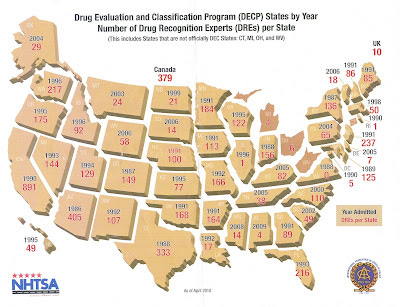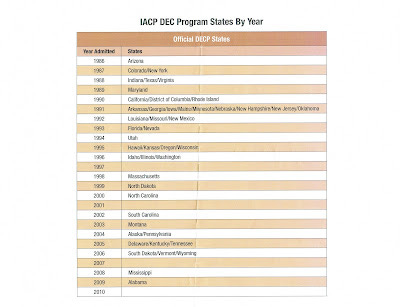Police supplied citizens with drugs so they could conduct bogus DRE tests

Minnesota - Police used young Occupy Minneapolis participants as human “guinea pigs” for a government drug research program, says a lawyer for six of the 99-percenters. The protestors, all in their late teens or early twenties, filed a civil lawsuit in February alleging they were subject to “essentially an unethical clinical trial” whereby police targeted Occupy Minneapolis protestors, homeless individuals, and other “vulnerable members of the population” and offered them free marijuana without the risk of arrest.
Which sounds pretty awesome, actually! Except that the armed police officers allegedly provided each of the protestors with up to ten bowls worth of random, presumably shitty street pot “obtained from police evidence in other cases” and then drove them to a government warehouse for “observation” — which basically sounds like the recipe for the most terrifying four hours in human history.
“Our playing field is they used these kids as things, they used them as guinea pigs,” argued attorney Alan Milstein at a hearing in front of U.S. Magistrate Franklin Noel last week. “They used them as means to an end, and that’s wrong.”
However, state officials have defended this practice of providing marijuana to members of the public, which they say is an important part of their Drug Recognition Evaluator Training Program. Which is used to prevent marijuana from being provided to members of the public.
“They voluntarily got into police cars and left,” said Jason Hiveley, lawyer for the state’s law enforcement agencies. He added that there was no evidence police targeted only Occupy Minnesota protesters for the experiment, and that some of the subjects “volunteered more than once.” Well, obviously. It’s puff PUFF pass. Repetition is key.
Magistrate Noel said he is taking the matter under consideration but offered no timetable for his decision (presumably seven to ten eternities if you are currently high). In the meantime, if a cop offers you free pot in exchange for a visit to an undisclosed government warehouse, it’s probably safe to say there’s a catch.
http://www.thedailydolt.com/2013/07/31/occupy-minneapolis-protesters-sue-cops-marijuana/
Police receive training to look at a drivers eyes and determine what type of drugs they're on:
Seattle police DUI Officer Mike Lewis hears it all the time when he pulls over stoned drivers crawling along Interstate 5 at half the speed limit.
“But it’s legal.”
They’re right — sort of.
Initiative 502 legalized recreational marijuana use in Washington last year, but if drivers are too high to safely operate a vehicle, they’ll still face a DUI charge.
Just as state law limits drivers to a .08 blood alcohol content, it limits them to five nanograms of THC, marijuana’s active ingredient, per milliliter of whole blood.
A blood test is the quickest way to tell, but getting one became trickier when the U.S. Supreme Court ruled in April that officers must have a warrant to obtain blood samples.
Because many stops are made late at night, when judges aren’t available, officers must determine on the scene whether the driver is impaired.
Lewis and more than 200 other officers around the state have been trained to make that determination. As drug-recognition experts, or “DREs,” they receive two weeks of instruction on picking out impaired drivers and analyzing their behavior for the presence of alcohol or drugs.
For more info read: The DRE Manual & The DRE & Classification Program
Since the program is administered on the state level, DRE officers can respond to DUI calls outside their jurisdiction and perform impaired-driver examinations wherever they’re needed.
Different agencies’ policies vary on when a DRE is needed, but they’re always called to investigate major collisions, especially those involving fatalities, and any in which officers suspect drug involvement beyond alcohol.
Seattle police Officer Jon Huber, a regional DRE coordinator and instructor, likens each officer to a “walking, talking, drug-testing machine.”
The DRE is a nationwide program administered in Washington by the State Patrol. The state’s 230 DREs make up about 2 percent of its total police force, Huber said. Lewis is one of SPD’s 12 active-duty drug recognition experts.
The program costs $3,000 per officer, funded by the Washington Traffic Safety Commission, and 30 to 50 “top-notch” applicants are accepted per year, said Sgt. Ken Denton, who works in the impaired-driving section of the Washington State Patrol.
The two-week course, which is offered in the spring and fall, is rigorous and includes lectures, quizzes and comprehensive tests.
Before they get to the final evaluation, though, training officers must also perform six field-sobriety tests and observe another six by their colleagues. They’ll write reports for all 12 tests, which are reviewed and signed by an observing instructor.
After the course is completed, each officer must perform four evaluations in front of an instructor every two years to maintain DRE status.
http://seattletimes.com/html/localnews/2021561671_drugrecognitionxml.html
The DRE program is found to be unreliable and not admissible:
http://massprivatei.blogspot.com/2013/01/expanded-non-perscription-drug-dui-law.html



